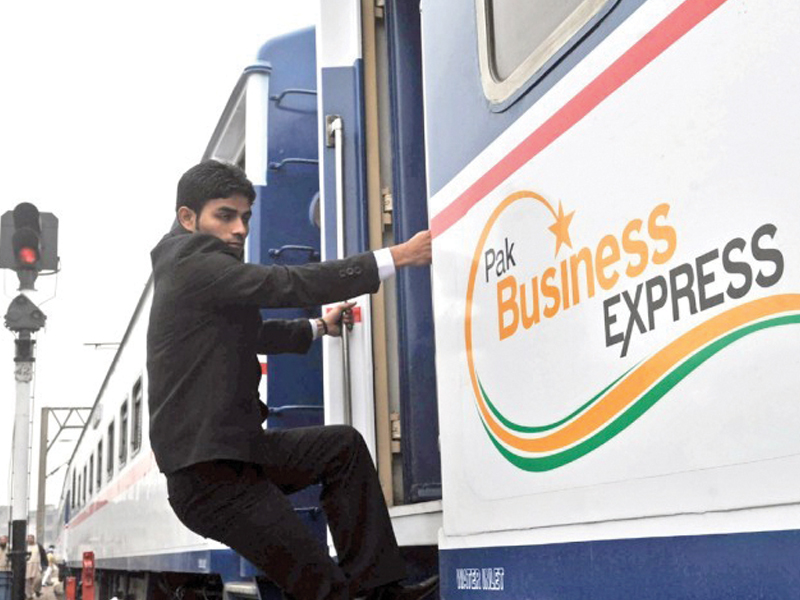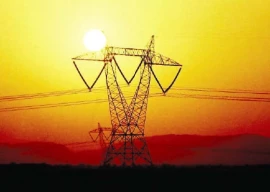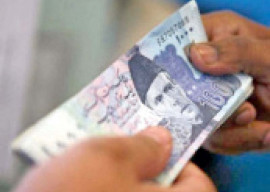
LAHORE:
The cash-strapped Pakistan Railways (PR) appears to be benefiting from its joint ventures with private companies: officials at the state-owned company admitted that the partnerships accounted for 26% of total passenger revenues for the railways, despite accounting for less than 1% of passenger traffic, during the first six months of financial year 2013.
Revenues for the Railways were up by 19.9% to Rs7.7 billion during the period between July 1 and December 20, 2012, compared to the same period in the previous year. Nearly 89% of that increase came from rising revenues in the passenger segment of the Railways, and nearly all of that increase came from the two public-private partnerships, where companies have leased out routes from Pakistan Railways. Passenger services account for nearly three-quarters of all Railways revenue.
In February 2012, Pakistan Railways signed an agreement to allow the Four Brothers Group, a diversified conglomerate, to run the Business Express, a refurbished train to that travels between Karachi and Lahore. The Railways gets Rs3.1 million per day for the service as a flat fee for the use of its stations and tracks. In March, a similar agreement privatised the newly revitalised Shalimar Express, operated by Air Rail Services, which provides the Railways with Rs1.5 million in lease revenues per day.

Both of these trains have carried around 400,000 passengers since they began services, a tiny fraction of the nearly 65 million passengers that the Railways served in the financial year ending June 30, 2011, the latest for which figures are available.
Pakistan Railways has 92 operational trains. The two of them that are currently privately operated account for more than a quarter of all revenues. These two routes have caused the passenger segment of the Railways to turn a small operating profit of Rs30 million for the first time since 2006.
That profit, however, is less a reflection of a turnaround at the Railways and more a preview of how much a full privatisation would benefit the state-owned company.
And the figures from the Railways mask an even greater problem. The company has massive pension liabilities which it is unable to pay. The federal government has directly assumed the responsibility for paying these since the death of a pensioner who passed away while waiting in line for his pension outside a National Bank office in Lahore in 2011.
And it cannot even afford to pay its own salaries, which are also paid for by the federal government. The net loss for Pakistan Railways for the first half of the financial year ending June 30, 2013 was over Rs1.5 billion. The Railways have not turned a net profit since the end of the Ayub Khan administration in the late 1960s.
The Privatisation Commission lists Pakistan Railways as a state-owned entity that is up for sale. Yet the left-leaning government led by the Pakistan Peoples Party seems to loathe privatising an entity that – with over 82,000 employees – is one of the largest employers in the country. An outright privatisation would almost certainly mean massive job losses, since the Railways have massive redundancies in their workforce.
And so the government appears to be pursuing what can only be described as a backdoor privatisation, where certain routes are leased out to private companies to run in exchange for fixed revenues. In addition to the two that started last year, a third train – the Night Coach – has also started service from Karachi to Lahore. It is also operated by Air Rail Services and its lease payments are set at Rs1.7 million per day.
“In the coming days, we are hoping that passenger revenues will reflect the expected increase from the latest joint venture,” said Zubair Shafi Ghauri, the spokesperson for Pakistan Railways. “We are now looking for some short-distance joint ventures from remote junctions to facilitate the rural population, though nothing is final yet.”
Whether or not this business model is sustainable is an open question. The management of the Business Express claims that their operational breakeven occurs at 55% occupancy levels, which they are only marginally above, despite operating on the popular Lahore-Karachi route. The Shalimar Express is faring a little better, with a 71% occupancy rate on the same route, with a slightly smaller train.
Published in The Express Tribune, January 12th, 2013.
Like Business on Facebook to stay informed and join in the conversation.
COMMENTS (6)
Comments are moderated and generally will be posted if they are on-topic and not abusive.
For more information, please see our Comments FAQ



































































@Riaz Haq: Indian Railway lift 1 billion tonnes of freight annually. Railways do not carry less than a trainload (4000 tonnes of cargo per train) of cargo from a client. Smaller loads go to road. That is why, increased share for the road.
65 million passengers that Pakistan Railways served in the financial year ending June 30, 2011 ??? Whats this, a sort of joke or what. Just the local trains of Mumbai carry 2,190 million passengers in an year. If one takes the compelete figure for India, many in Pakistan Railways will faint.
@Hammad: "Over the years, army controlled NLC has taken over cargo transport from the railway."
So how do you explain the following: Indian railway has also been losing its share of India's transport market. Today, 90% of India's passenger traffic and 65% of its freight operations use road transportation, according to World Bank. Is this an Indian Army take-over or broadening of options for shippers?
http://www.riazhaq.com/2012/02/save-pakistans-education-airline.html
There are 20 homegrown companies like Tata's and Reliance which employ 5 time more employees then Pakistan Railways...BTW..India Railways employs 1.5 million people...the largest employer in the world..
Over the years, army controlled NLC has taken over cargo transport from the railway. This is the main causes of loss of revenues. Passenger revenues are always a small part of the total system.
So Pakistan Railways has turned into a broker! +++++++++++++++++++++++++++ Soon Pakistan Airlines and Steel should also adopt this creative route.